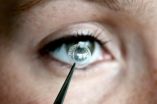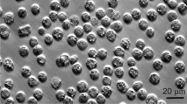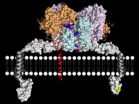(Press-News.org) Many quantum technologies—such as cryptography, quantum computing and quantum networks—hinge on the use of single photons. While she was at the Kastler Brossel Laboratory (affiliated with the Pierre and Marie Curie University, École Normale Supérieure and CNRS) in Paris, France, Virginia d'Auria and her colleagues identified the extent to which photon detector characteristics shape the preparation of a photon source designed to reliably generate single photons. In a paper about to be published in EPJ D, the French team determined the value of key source parameters that are necessary to generate high-fidelity single photons.
The problem with photon detectors is that they can be noisy or have a limited ability to detect single photons. Some cannot identify the number of photons; they can only detect their presence. Given the influence of these factors, improving the fidelity of single-photon generation is very challenging. But it is also crucial for their subsequent use in quantum information protocols, including quantum communication and computing.
Single photons are typically generated using two laser beams that are correlated at the quantum level. This means that the detection of a single photon in the first beam heralds the generation of a single photon in the second one.
The authors first reviewed how to describe a detector from a mathematical point of view. They then simulated which photons would be obtained from different initial sources. This led the team to outline the conditions under which the heralding detector can deliver good resolution of the number of photons, as a means of improving the reliability in obtaining single photons. They corroborated their findings using two experimental detectors.
###
Reference:
V. D'Auria, O. Morin, C. Fabre, J. Laurat (2012), Effect of the heralding detector properties on the conditional generation of single-photon states, European Physical Journal D, DOI 10.1140/epjd/e2012-30351-6
For more information, please visit www.epj.org
The full-text article is available to journalists on requests.
Hi-fi single photons
A trade-off between photon source settings and detector specific requirements allows the generation of high-fidelity single photons
2012-10-04
ELSE PRESS RELEASES FROM THIS DATE:
Lakes react differently to warmer climate
2012-10-04
The study in question has been carried out by a group of researchers at the Department of Biology at Lund University. The research team is specifically focusing on predictions regarding how our water resources will be like in the future, in terms of drinking water, recreation, fishing and biodiversity. They have now published findings on the impact of a warmer climate on lakes in the journal Nature Climate Change.
"The most interesting and unexpected result from the study is that the reaction to climate change will vary between lakes; this has been observed previously ...
Artificial cornea gives the gift of vision
2012-10-04
Our eyes are our window to the world. Thousands of people have lost their eyesight due to damages to the cornea, such as trauma, absent limbal stem cells or diseases. Transplantation of a donor cornea is the therapy of choice for a great number of those patients. Let alone the issue of scarce donor material, a sub-group of patients do not tolerate transplanted corneas, necessitating the employment of an alternative means of restoring eye sight. In Germany alone, around 7,000 patients are waiting to be treated. In close cooperation with the Aachen Centre of Technology ...
Researchers a step closer to controlling inflammation in MS
2012-10-04
A University of Adelaide researcher has published results that suggest a possible new mechanism to control multiple sclerosis (MS).
Dr Iain Comerford from the University's School of Molecular and Biomedical Science earned a three-year fellowship from MS Research Australia to work on this project. It is directed towards understanding how specific enzymes in cells of the immune system regulate immune cell activation and migration.
Along with his colleagues, Professor Shaun McColl and PhD students Wendel Litchfield and Ervin Kara, he focused on a molecule known as PI3Kgamma, ...
More certainty on uncertainty's quantum mechanical role
2012-10-04
WASHINGTON, Oct. 4—Scientists who study the ultra-small world of atoms know it is impossible to make certain simultaneous measurements, for example finding out both the location and momentum of an electron, with an arbitrarily high level of precision. Because measurements disturb the system, increased certainty in the first measurement leads to increased uncertainty in the second. The mathematics of this unintuitive concept – a hallmark of quantum mechanics – were first formulated by the famous physicist Werner Heisenberg at the beginning of the 20th century and became ...
VIMS researchers unravel life cycle of blue-crab parasite
2012-10-04
Professor Jeff Shields and colleagues at the Virginia Institute of Marine Science have succeeded in their 15-year effort to unravel the life history of Hematodinium, a single-celled parasite that afflicts blue crabs and is of growing concern to aquaculture operations and wild fisheries around the world.
Knowledge of the parasite's complex life cycle—gained by rearing of successive generations across a full year in a VIMS laboratory—will help guide efforts to understand the transmission of Hematodinium within crab populations and shrimp farms, and to develop best practices ...
Fox squirrels show long-term investment savvy when hoarding nuts
2012-10-04
Researchers at the University of California, Berkeley, are gathering evidence this fall that the feisty fox squirrels scampering around campus are not just mindlessly foraging for food, but engaging in a long-term savings strategy. Humans could learn something about padding their nest eggs from squirrels' diversification efforts.
Of course, with squirrels, it's not about money, but about nuts.
"Think of them as little bankers depositing money and spreading it out in different funds, and doing some management of those funds," said Mikel Delgado, a doctoral student ...
Nonprescription medication abuse underestimated
2012-10-04
Nonprescription medications are just as likely a cause of poisoning as prescription drugs, according to a new study by Timothy Wiegand, M.D. from the University of Rochester Medical Center in the US and colleagues. Their work, which analyzes the data from the second annual report of the Toxicology Investigators Consortium (ToxIC), is published online in Springer's Journal of Medical Toxicology.
In 2010, the American College of Medical Toxicology established its case registry, ToxIC, which acts as a real-time surveillance system to identify current poisoning trends, and ...
Study reveals how bicultural consumers respond to marketing cues
2012-10-04
NEW YORK - October 4, 2012 - Consider a Japanese-American woman strolling through a mall. If she passes by a UNIQLO store, is she more likely to opt for sushi than a hamburger when she reaches the food court? Would this cue of Japanese culture draw out her Japanese side? The answer, according to new research from Columbia Business School's Michael Morris, the Chavkin-Chang Professor of Leadership, and Aurelia Mok, Assistant Professor, City University of Hong Kong (she received her Ph.D. from Columbia Business School in 2010), depends on the degree to which she has integrated ...
A molecular scissor related to Alzheimer's disease
2012-10-04
This press release is available in Spanish.An international research team led by the Spanish National Research Council (CSIC) and researchers from Kiel University revealed the atomic‐level structure of the human peptidase enzyme meprin β (beta). The study was published online in the journal Proceedings of the National Academy of Sciences.
"Now that we know how meprin β looks, how it works and how it relates to diseases, we can search for substances that stop its enzyme activities when they become harmful", explains Xavier Gomis‐Rüth, researcher at ...
NYU researchers find electricity in biological clock
2012-10-04
Biologists from New York University have uncovered new ways our biological clock's neurons use electrical activity to help keep behavioral rhythms in order. The findings, which appear in the journal Current Biology, also point to fresh directions for exploring sleep disorders and related afflictions.
"This process helps explain how our biological clocks keep such amazingly good time," said Justin Blau, an associate professor of biology at NYU and one of the study's authors.
Blau added that the findings may offer new pathways for exploring treatments to sleep disorders ...
LAST 30 PRESS RELEASES:
Scientists use ultrasound to soften and treat cancer tumors without damaging healthy tissue
Community swimming program for Black youth boosts skills, sense of belonging, study finds
Specific depressive symptoms in midlife linked to increased dementia risk
An ‘illuminating’ design sheds light on cholesterol
Who is more likely to get long COVID?
Study showcases resilience and rapid growth of “living rocks”
Naval Research Lab diver earns Office of Naval Research 2025 Sailor of the Year
New Mayo-led study establishes practical definition for rapidly progressive dementia
Fossil fuel industry’s “climate false solutions” reinforce its power and aggravate environmental injustice
Researchers reveal bias in a widely used measure of algorithm performance
Alcohol causes cancer. A study from IOCB Prague confirms damage to DNA and shows how cells defend against it
Hidden viruses in wastewater treatment may shape public health risks, study finds
Unlock the power of nature: how biomass can transform climate mitigation
Biochar reshapes hidden soil microbes that capture carbon dioxide in farmland
Reducing saturated fat intake shows mortality benefit, but only in high-risk individuals
Manta rays create mobile ecosystems, study finds
Study: Mixed results in using lipoic acid to treat progressive multiple sclerosis
Norbert Holtkamp appointed director of Fermi National Accelerator Laboratory
New agentic AI platform accelerates advanced optics design
Biologists discover neurons use physical signals — not electricity — to stabilize communication
Researchers discover that a hormone can access the brain by hitchhiking
University of Oklahoma researcher awarded funding to pursue AI-powered material design
Exploring how the visual system recovers following injury
Support for parents with infants at pediatric check-ups leads to better reading and math skills in elementary school
Kids’ behavioral health is a growing share of family health costs
Day & night: Cancer disrupts the brain’s natural rhythm
COVID-19 vaccination significantly reduces risk to pregnant women and baby
The role of vaccination in maternal and perinatal outcomes associated with COVID-19 in pregnancy
Mayo Clinic smartwatch system helps parents shorten and defuse children's severe tantrums early
Behavioral health spending spikes to 40% of all children’s health expenditures, nearly doubling in a decade
[Press-News.org] Hi-fi single photonsA trade-off between photon source settings and detector specific requirements allows the generation of high-fidelity single photons



